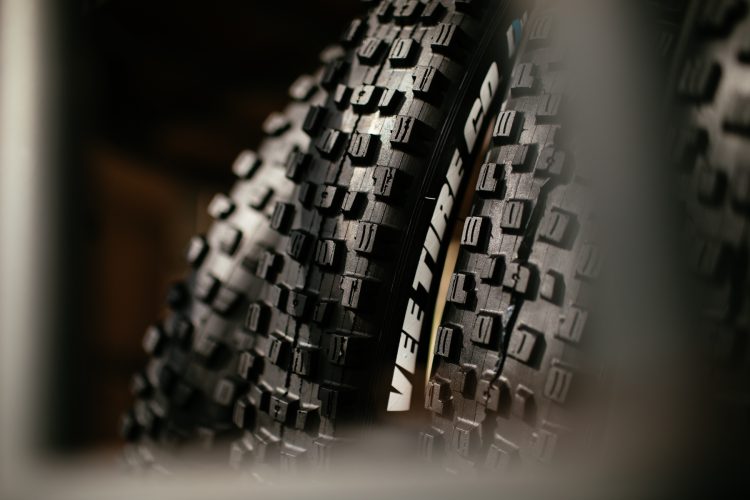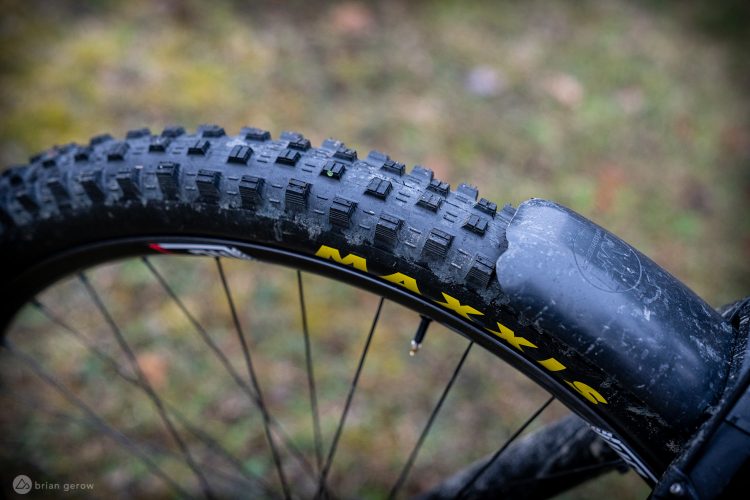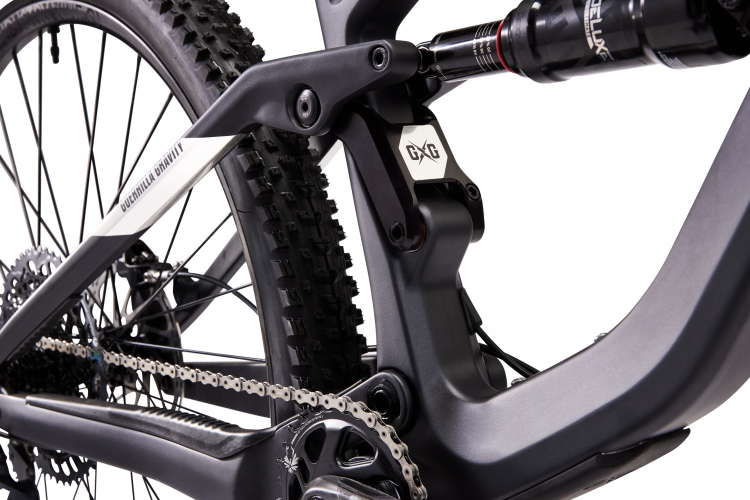
The Trek Factory Racing squad has a new frame to play on for this season, with an updated all-aluminum Session. This latest iteration of the bike can roll on a full 29″ wheel setup, mixed wheels, or full 27.5″ with the use of a flip-chip that adjusts its BB height, and a headset spacer for the dual 27.5″ configuration. Those options will allow riders to choose the best wheel setup for a given track without purchasing a second bike.

The Session uses an 83mm threaded BB that sits just below the requisite idler pulley you’ll see on any high pivot bike. Trek has used a single high-pivot system on the Session with other iterations of the bike since its birth in 2005. The 2006 Session had an idler-pulley and high pivot and it was loved by loads of freeride and DH enthusiasts.
As the graph below shows, the new bike has a more rearward axle path than its predecessor, though it might be better described as a vertical axle path. There are some high-pivot bikes out there where the axle moves much more rearward, following the energy of impacts. Axle path for the new Session moves in a rearward direction for the first 100mm, and then swings forward for the second half of the travel.
The bike’s idler pulley is placed very close to the main pivot, bringing pedal kickback down to a mere 5-8° due to the minimized chain growth. That means riders will feel less of the trail in their feet while braking on steep sections and can pedal whenever they want without the chain force affecting suspension performance.

The reach measurement has grown dramatically on the three frame sizes, measuring 440, 465, and 490mm respectively in the 29er configuration. To compare that with another World Cup winning frame, the Commencal Supreme 29er stretches between 455, 480, and 500mm across the same three sizes. The Session head tube angle is 63° in the low position, and 63.6° in the high position, compared to the Commencal’s fixed 63.8°. Chainstay lengths shift across the three sizes to balance the frame, with measurements of 439, 445, and 452mm respectively. Rather than using different chain and seat stays for each size Trek opted to move the links for added length, so riders who need a replacement tube for the bike’s rear triangle won’t have to worry about sizing. Finally, wheelbase is a key element of any DH bike, and the Session puts 1255.2, 1286.2, 1321.2mm between the bikes’ axles. The Commencal Supreme stretches to a shorter 1252, 1277, and 1297mm thanks to its steeper head tube and stubby 430mm chainstays.
While there is internal cable routing in the front triangle there’s also a set of bolt-on external guides that allow riders to mount hoses and housing quickly in case they need to bleed the rear brake on race day. Another cool frame feature is the long downtube protector that can be unscrewed and replaced once it’s fully chewed up. Finally, there is a flip-chip that allows riders to choose between 20% and 25% progressivity for the rear suspension.

This model-year 2022 Session will only be available in aluminum and can be purchased as a frameset with a Fox DHX Performance shock and head tube extender included for $2,999. Session 8 builds come with a 200mm RockShox Boxer fork and a Fox VAN Performance coil shock, a 29″ Bontrager Line HD 30 wheelset, a SRAM GX 7-speed drivetrain with a Truvative Descendant crank, and a set of SRAM Core R 4-pot brakes for $4,999. The top Session 9 builds get an upgraded RockShox Super Deluxe Ultimate DH shock and the Ultimate version of the Boxer fork, a full SRAM X01 drivetrain, and the ever powerful SRAM Code RSC brakes on both wheels for $6,999.
Head over to Trek Bikes for additional info.



















